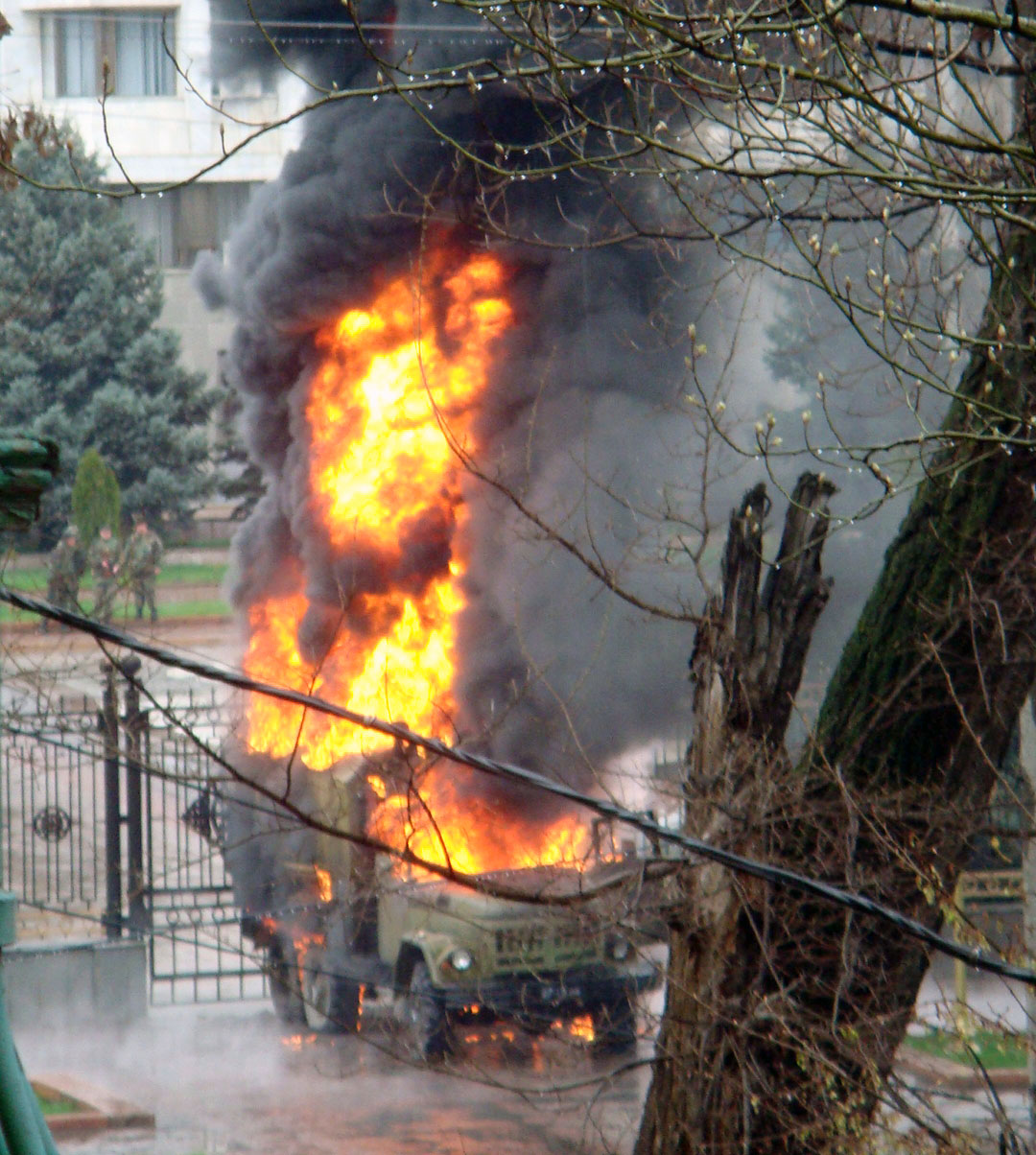
2010 Kyrgyz Revolution
The 2010 Kyrgyz Revolution, also known as the Second Kyrgyz Revolution, the Melon Revolution,[1][2][3][4] the April Events (Kyrgyz: Апрель окуясы, romanized: Aprel okuyasy)[5] or officially as the People's April Revolution,[6] began in April 2010 with the ousting of Kyrgyz president Kurmanbek Bakiyev in the capital Bishkek. It was followed by increased ethnic tension involving Kyrgyz people and Uzbeks in the south of the country, which escalated in June 2010. The violence ultimately led to the consolidation of a new parliamentary system in Kyrgyzstan.
2010 Kyrgyz Revolution
6 April – 15 April 2010
(1 week and 2 days)
- Authoritarianism
- Economic and energy crises
Protests, riots
Democratization of Kyrgyzstan
- Resignation of president Kurmanbek Bakiyev and his government
- Governmental shift from presidentialism to parliamentarism
- Early parliamentary elections held on 10 October 2010
During the general mayhem, exiles from the Uzbek minority claim they were assaulted and driven to Uzbekistan, with some 400,000 Kyrgyzstani citizens becoming internally displaced.[7] Victims interviewed by media and aid workers testify to mass killing, gang rape and torture.[8] Then-head of the Interim government Roza Otunbayeva indicated that the death toll is tenfold higher than was previously reported, which brings the number of the dead to 2,000 people.
Following the Kyrgyzstani parliamentary election, 2010, the pro-Bakiyev Ata-Zhurt party won a plurality as it campaigned to roll back the new constitution and bring Bakiyev back from exile.
A provisional government was established with the following leaders at its head: